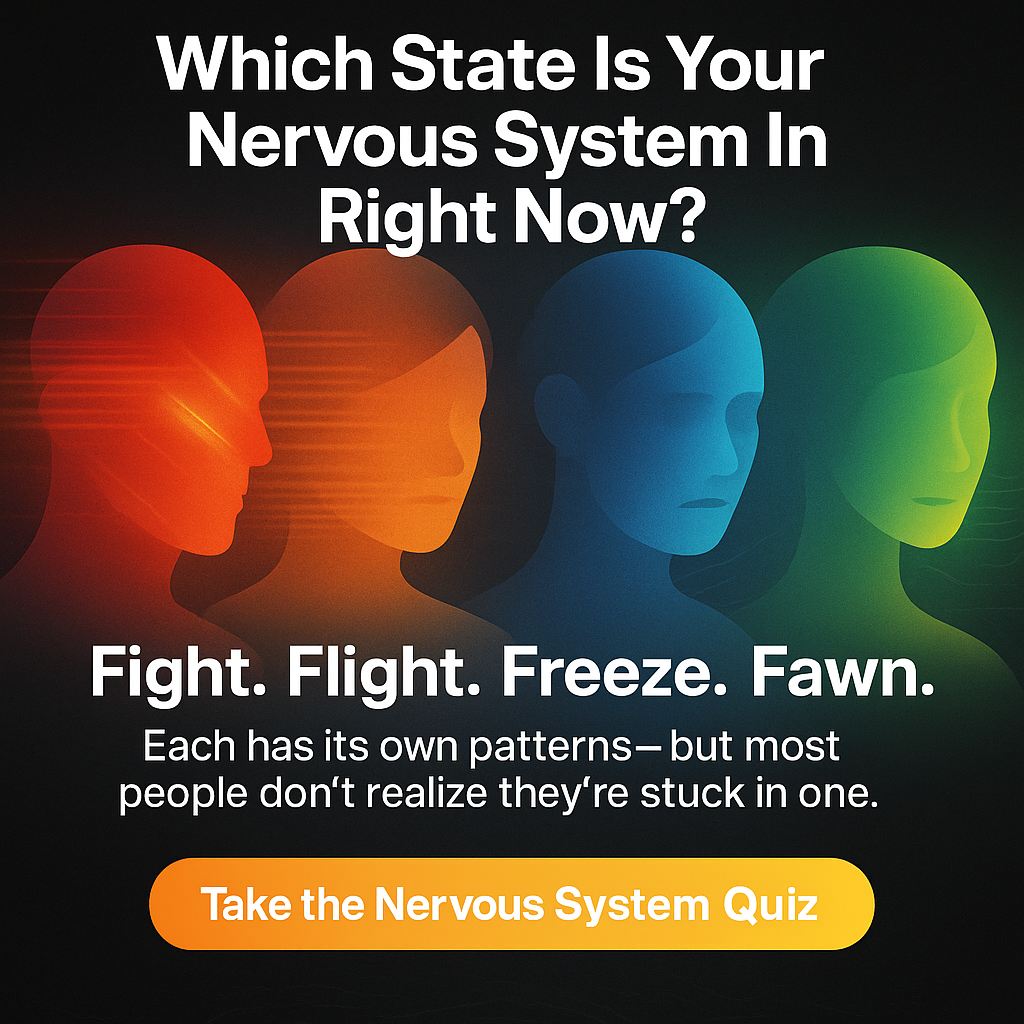
EFT Tapping for Nervous System Calming: Simple Points to Feel Safe Again
When stress floods your body for no clear reason, it can feel like being trapped in a storm you can’t see. Your heart races, thoughts spin, and you just want out.
That’s your nervous system trying to protect you. And it’s possible to teach it safety again.
One of the gentlest ways to do that is through EFT tapping, or Emotional Freedom Technique. This combines soft tapping on specific acupressure points with mindful attention. The touch signals the brain through the vagus nerve that the threat has passed, and the body can relax.
If you often feel on edge, you might enjoy taking the Stress Loop Quiz first to understand your unique regulation pattern before starting.
Featured Snippet
EFT (Emotional Freedom Technique) is a form of acupressure using fingertip tapping on key points of the body while focusing on an emotion or stressor.
Research suggests it may reduce cortisol and calm the amygdala, helping restore nervous system balance.
It’s gentle, portable, and can be used anywhere you feel overwhelmed.
Why It Works
Your nervous system doesn’t just react to current stress. It remembers. When old experiences stay unprocessed, the body keeps sending alert signals even when life is calm.
Tapping interrupts this loop and creates a rhythmic, predictable pattern that tells your system it’s safe.
If you’ve ever wondered “Why do I always feel ready to jump out of my skin for no reason?”, this may be part of what’s happening. That hyper-alert state often links back to old stored activation, described in this piece on hidden trauma responses.
The beauty of EFT is that you don’t have to analyze everything to start calming your body. You begin where you are—with touch, breath, and gentle curiosity.
The Main Calming Points
You can use one or both hands. Tap each point about five to seven times while breathing slowly.
-
Side of Hand (Karate Chop Point)
Edge of your palm under the pinky. Helps set intention and lower initial tension.
Say softly: “Even though I feel this stress, I’m open to feeling calmer.” -
Eyebrow Point
Where the brow begins near the bridge of the nose. Helps release racing thoughts. -
Side of Eye
On the bone beside the outer corner of the eye. Soothes the body’s alarm response. -
Under Eye
On the bone below the pupil. Supports grounding and emotional safety. -
Under Nose
Between upper lip and nose. Regulates shallow breathing and facial tension. -
Chin Point
Between lower lip and chin crease. Helps soften internal criticism. -
Collarbone Point
Just below the collarbone. A powerful signal of connection and safety. -
Under Arm
About a palm’s width below the armpit. Releases lingering restlessness. -
Top of Head
Center of the scalp. Integrates calm throughout the body.
You can pair these points with any simple statement that matches how you feel—such as “I notice my chest tightening,” or “It’s okay to slow down.”
For additional sensory grounding, you can also try these panic-safe grounding tools.
A Gentle Tapping Sequence
-
Take three slow breaths to arrive in your body.
-
Begin at the Side of Hand, repeating:
“Even though my body feels tense, I’m open to feeling safe right now.” -
Move through each point, saying small, honest phrases like:
-
“This tightness.”
-
“This fear.”
-
“I’m noticing it.”
-
“It’s safe to release a little.”
-
-
After one round, pause and breathe.
Notice any small changes in warmth, breath, or thought speed.
If you prefer following structure, you may enjoy this 10-minute nervous system reset you can do anywhere.
When the Body Feels Too Activated
Sometimes the body’s reaction feels like a panic attack. Your heart pounds, your breath shortens, and your mind spirals.
If that happens, pause tapping and focus on longer exhales or touch a grounding surface near you.
You can read more in What Are Panic Attacks? Why Do They Happen? Can I Stop Them?.
When emotions feel too much, remember that slowing down is not failure. It’s a form of care. The goal isn’t perfection, but gentle regulation.
7-Day Mini Plan
Day 1–2: Tap once before bed to unwind.
Day 3–4: Add a morning round to begin calmly.
Day 5–6: Use tapping during moments of overwhelm.
Day 7: Reflect on which phrases helped most and keep those.
To build steady resilience, explore how to widen your window of tolerance daily—a simple way to stay calmer over time.
Common Sticking Points
“I don’t feel anything.”
That’s okay. Numbness is often a protective response. Keep tapping and noticing sensations, however faint.
“It feels silly.”
That’s normal. The brain may resist at first. The rhythm itself is part of the calming signal.
“I get emotional.”
If tears arise, pause, breathe, or tap only on your collarbone point while saying, “I’m safe now.”
FAQ's
1. How long should an EFT tapping session last?
Most people find that 5–10 minutes is enough to feel a noticeable shift. Shorter, one-minute sessions during stress spikes can still help the nervous system find balance.
2. Do I need to say specific affirmations while tapping?
No strict phrases are required. Gentle acknowledgment works best, like “I notice this tension,” or “I’m safe to feel a little calmer now.” The intention matters more than the exact words.
3. What if tapping makes me feel worse?
Sometimes sensations rise before they release. If emotions feel too strong, stop, take a slow breath, and focus on a grounding exercise from this panic-safe guide. Always go at your own pace.
4. Can EFT tapping help with physical pain or trauma recovery?
EFT may help by calming the body’s stress response that amplifies pain or emotional reactivity. For trauma-related use, consider pairing it with professional support and resources like how to reset your nervous system after trauma.
5. How often should I practice EFT tapping?
You can tap daily or as needed. Many people make it part of their bedtime or morning routine, just like mindful breathing.
6. Is EFT scientifically proven?
Several studies show EFT may lower cortisol and reduce anxiety symptoms. While research continues, many people report meaningful improvements in calmness and focus.
More Gentle Reads
If you found this grounding, you may also like:
Disclaimer: This article is educational and not medical advice. If you have health concerns, consider speaking with a qualified professional.
Discover Your Vagal Tone
Find out how dysregulated your nervous system is and get your personalized roadmap to feeling calm, energized, and in control


